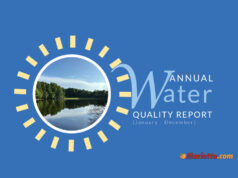As one of the nation’s most traveled and congested highways, I-285’s top end has become a focal point for improvement in the state of Georgia. Initiated in 2006, the Georgia Department of Transportation’s and the Georgia Regional Transportation Authority’s revive285 top end project has been in the process of the development, identification and selection of solutions to improve congestion, safety, system linkage and transportation options on this vital corridor.
Alternatives for improving I-285 top end narrowed
GDOT and GRTA have recently completed analysis of the eight alternatives developed and taken into account the input received from the public in order to determine if an alternative should move forward, be modified, or be discarded from consideration. The alternatives were evaluated based on costs, impacts, and ability to satisfy the project Need and Purpose. The following alternatives best meet those needs and are advancing for further consideration:
a) Alternative 1- No Build, which is required by the National Environmental Policy Act (NEPA);
b) Alternative 4 – Express Bus + Operational Improvements;
c) Alternative 6A – Express Bus + Managed Lanes + Operational Improvements + Future Transit Right of Way; and
d) Alternative 6B – Express Bus + Managed Lanes + Operational Improvements + Future Transit Right of Way + General Purpose Lane Re-designation
Next Steps
In order to be approved, the Federal Highway Administration (FHWA) requires a project go through the National Environmental Policy Act (NEPA) process. NEPA provides the framework for environmental planning and decision-making by federal agencies. It includes input from the public as well as from other state and federal agencies so that all environmental issues, such as impacts to the natural, social, cultural, and economic environments, as well as other issues are addressed. In addition to evaluating environmental effects, the transportation needs of the public are taken into account in reaching a decision that is in the best overall public interest.
The revive285 top end project documents its NEPA process with an Environmental Impact Statement (EIS). An EIS is a comprehensive report that details the process through which a transportation project was developed, including consideration of a range of alternatives, of potential impacts, and of compliance with applicable environmental laws. Now that we have narrowed the alternatives down to four, we will begin drafting the EIS.
How Can You Get Involved?
Public Hearing Open Houses will formally offer the public the opportunity to review and provide input on the Draft EIS and the alternatives advanced. In the meantime, we will be conducting additional analysis of alternative 6A. New information on this and additional detail on existing alternatives will be shared as it becomes available, and the public is invited to stay engaged by:
- Participating in upcoming project surveys,
- Scheduling speakers for your organization,
- Sharing the project emails, website: www.revive285.com, mapping tool and videos with other citizens, and
- Interacting with the project via online information requests, message boards, e-mail, Facebook (revive285 top end) and Twitter (@revive285).
You can contact us directly with questions and comments at info@revive285.com or (770) 431-7445.
Article courtesy of the Revive285 top end Public Involvement Team















